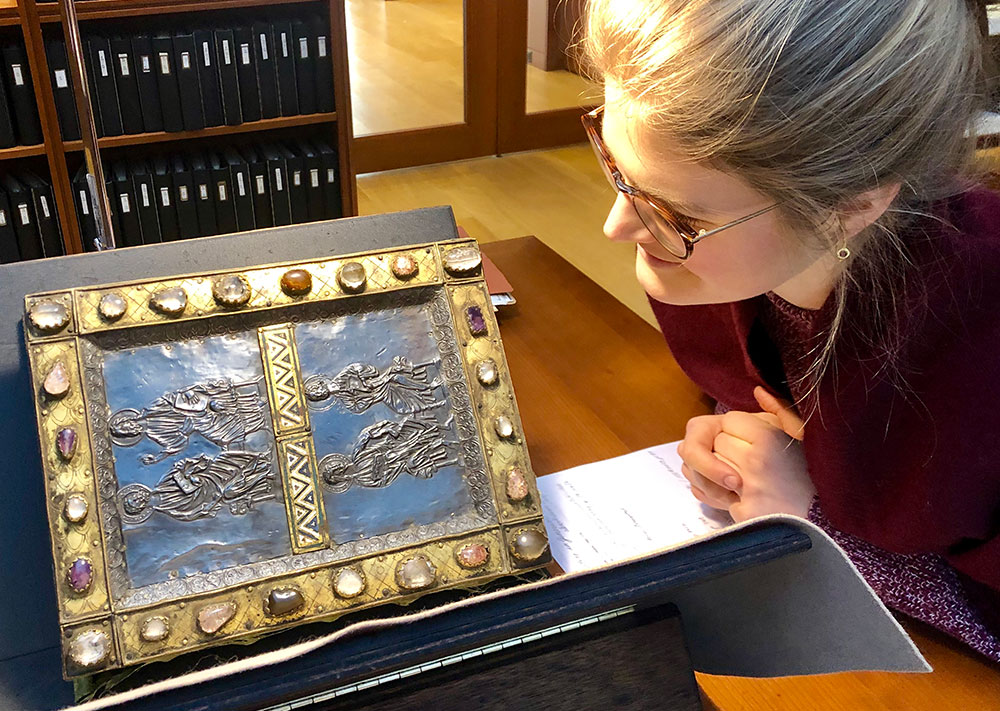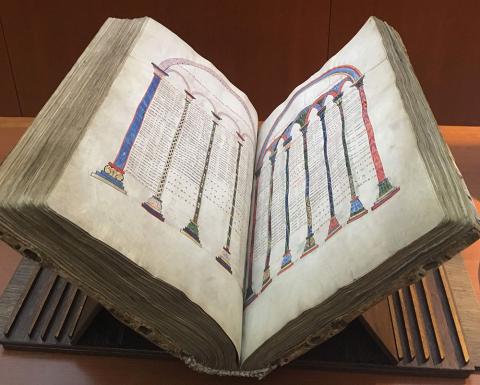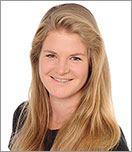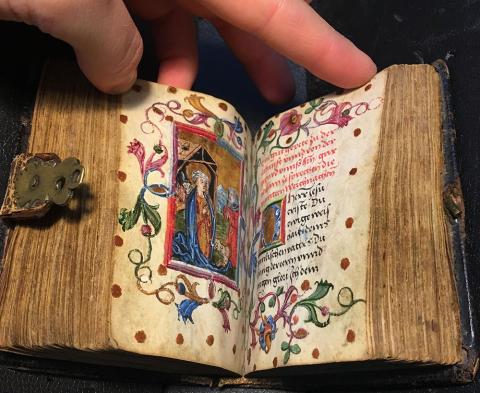After finishing my master’s thesis in the history of art and medieval history and working at and with different European museums, I wanted to gain more knowledge about other international collections, their history as well as how their art is handled. My interaction with the Morgan Collection started a few years ago in Germany. I am especially interested in the liturgical use of European medieval manuscripts, mainly from the eleventh to the fifteenth century, and the correlation of their illuminations with work by goldsmiths. CORSAIR and the catalogs were really helpful for my research from another continent; but even with the help of a great database, there is so much I couldn't see. Therefore, I was really looking forward to coming to New York to visit the Morgan and to work with a selection of the marvelous objects in its collection.

Origen, Homilies, Trier, Germany, 1200–1250, Purchased by J. Pierpont Morgan (1837–1913); 1907, MS M.318.
As a scholar of the German Academic Exchange Service (DAAD), I worked in the Medieval & Renaissance Manuscripts Department. My job was to study more than 100 manuscripts in the Reading Room for an upcoming exhibition at the Morgan on mid-European manuscripts in American collections. The various manuscripts from different collections, like those of Glazier, Bühler, Morgan, and Wightman, were written and partly illuminated between the eighth and the eighteenth century. They show a large range of different types of manuscripts, such as gospel books, antiphonars, psalters, medical and astronomical texts, law books, and books about table manners. Most of them were written in Latin, Middle High German, or different dialects from regions of what are now Austria, Switzerland, and Germany.

Bible fragment, North Germany, perhaps Magdeburg, ca. 1100
Purchase; John F. Fleming; 1958, MS M.889.
The oldest manuscript I found was a sacramentary single leaf (G.27), which was written and illuminated with a large colored interlace initial, possibly in Chur, Switzerland, in the second half of the eighth century with additions in Latin from the ninth and tenth centuries written at the Monastery of St. Gall, where it was probably preserved in a binding for a long time. One of the largest and heaviest manuscripts is a Bible from northern Germany, perhaps Magdeburg, ca. 1100 (M.889). It is 555 by 360mm and has 277 leaves and a leather binding over heavy wooden boards, which most likely dates back to the thirteenth century. Inside are beautiful and colorful canon tables, initials, and four evangelist portraits. Just 105 by 75 mm, the Book of Hours (S. 14) is one of the smallest I saw. It was probably written and illuminated in Tyrol, Austria, or southern Germany around 1500 and was bound in seventeenth-century, brown Morocco over wooden boards. This manuscript is illustrated with many colorful miniatures, beautiful illuminated borders, and heraldic compositions.
The use of decoration, initials, and miniatures differs depending on the type of book and the time it was made. In some cases, the illuminations help to divide chapters; in others they illustrate the text or even replace the text as in some picture Bibles such as that shown in M.230. The 144 pen-and-ink drawings of this biblia pauperum are illustrated in Austria, perhaps Vienna, circa 1435. The titles and descriptive text were added in the sixteenth century. Huge differences can also be found in the bindings. Some of the manuscripts were collected purely because of the historically and artistically significant book bindings. Some bindings are modern or contemporary, or both, as can be seen in the Homilies of Origen (M. 318), which was written and illuminated at Himmerod Abbey (Trier, Germany) during the first half if the thirteenth century. The composite metal plaques (with reliefs depicting apostles) are nineteenth-century copies of reliefs from the early-thirteenth-century triptych “Reliquary of The True Cross”, which is at the Victoria and Albert Museum (no. 7947-1862), and the strips of champlevé enamel may be fourteenth-century Rhenish work.
My job was to study these very different manuscripts, gather research, and make the information accessible to the public. I described the illuminations, partly identified and translated the Latin and Middle High German texts, reviewed the already translated texts and the provenance of each, checked the research, and renewed the bibliographies for the appendix of the upcoming exhibition catalog. The Reading Room was the perfect place to be for this time-travelling experience: I had access not only to the manuscripts but also to the broadly diversified research collection and the internal files. The mostly handwritten notes and the translations and copies of essays were really helpful for further research on the provenance of and literature on the manuscripts.
Now that I am back in twenty-first-century Germany, I am using the databases, as well as my photos and notes, for the final edition of the appendix for the exhibition catalog. I can´t wait to go back to the Morgan to visit the upcoming exhibition and work on new projects in the beautiful Reading Room with its awesome manuscripts and literature and its great staff.
 Carolin Marie Kreutzfeldt finished her master’s degree in the history of art and medieval history at Christian-Albrechts-Universität in Kiel, Germany, and at the Sorbonne, Paris, France. Now she works at the Directorate of the Staatlichen Museen zu Berlin. Her research on goldsmith and enamel works as well as liturgical and ritual use of reliquaries led her to connected topics such as the liturgical use of books, book illuminations, and the similarities between illuminations and objects made by goldsmiths.
Carolin Marie Kreutzfeldt finished her master’s degree in the history of art and medieval history at Christian-Albrechts-Universität in Kiel, Germany, and at the Sorbonne, Paris, France. Now she works at the Directorate of the Staatlichen Museen zu Berlin. Her research on goldsmith and enamel works as well as liturgical and ritual use of reliquaries led her to connected topics such as the liturgical use of books, book illuminations, and the similarities between illuminations and objects made by goldsmiths.

